Improving Workspace Durability with Concrete Loading Pads
March 3, 2025

In industries where heavy machinery and constant traffic are the norm, concrete loading pads are a pillar of a durable, reliable workspace. These reinforced surfaces do more than withstand pressure. They distribute weight evenly, reduce stress on underlying layers, and keep operations running smoothly. Without them, wear and tear accelerate, safety risks rise, and maintenance costs climb. Whether it’s a distribution hub, an industrial site, or a transportation facility, concrete loading pads bring stability to chaos.
Choosing the Right Material for Maximum Durability
At its core, concrete is a blend of cement, water, and aggregates, designed to handle heavy loads without breaking down. While alternative materials like plastic lumber, rubber matting, or metal plates exist, they don’t match concrete’s durability or adaptability. It remains the industry standard for a reason.
That said, innovation is pushing boundaries. Engineers are exploring polymer-based solutions and recycled composites as eco-friendly alternatives. These materials aim to retain concrete’s strength while reducing environmental impact. But for now, when it comes to reliability under pressure, traditional concrete still leads the way.
Installation as The Make-or-Break Factor
A concrete loading pad is only as good as its installation. A poor foundation leads to cracks, shifting, and eventual failure. That’s why site preparation is crucial.
Initially, the area needs to be cleared of debris, loose soil, and vegetation. A well-compacted base ensures stability and prevents future settling. Typically, a gravel layer—between four and eight inches deep, is laid down to distribute weight and enhance drainage. Without proper grading, water collects, eroding the surface and compromising durability.
Before pouring the concrete, a final inspection ensures that every detail meets the required specifications. Cutting corners here shortens the lifespan of the pad, leading to unnecessary repairs down the line. Precision at the start pays off in the long run.
Keeping Concrete Loading Pads in Top Shape
Even the toughest surfaces need maintenance. Regular inspections catch early signs of damage, like small cracks, surface wear, or moisture penetration, before they turn into bigger problems. Quick repairs prevent minor flaws from expanding into costly issues.
Sealing the concrete protects against moisture absorption, weather-related damage, and chemical spills. Cleaning the surface regularly keeps it free from corrosive materials that can break down the structure over time. Drainage is another critical factor. Standing water accelerates deterioration, weakening the foundation beneath.
With proactive maintenance, concrete loading pads can last for decades, reducing the need for expensive replacements and keeping workspaces safe and efficient.
The Industries That Rely on Concrete Pads
From construction sites to logistics hubs, concrete loading pads serve as the foundation for productivity. Heavy machinery needs a stable base to operate efficiently without causing ground erosion or equipment damage. In warehouses and distribution centers, these pads protect material handling areas, preventing surface wear from constant movement.
At airports and seaports, where high traffic and harsh conditions take their toll, concrete loading pads provide the strength needed to withstand constant use. Even in agriculture, these durable surfaces support equipment, improving efficiency in logistics and storage.
Challenges That Can’t Be Ignored
Despite their benefits, concrete loading pads come with challenges. Miscalculating load distribution, skipping critical foundation work, or misplacing reinforcement can weaken structural integrity. Ignoring environmental factors like freeze-thaw cycles or excessive moisture leads to premature failure.
Beyond installation, regulatory roadblocks and permitting delays can slow projects down, adding unexpected costs. The environmental footprint of concrete production is another consideration, pushing the industry toward more sustainable construction methods. Addressing these concerns early ensures that loading pads remain a dependable solution for years to come.
Concrete loading pads check all the boxes for industries that demand reliability. Their success depends on proper material selection, meticulous installation, and ongoing maintenance. As industries evolve, advancements in sustainable materials and innovative design will shape the next generation of concrete pads. The goal remains the same: to create workspaces that stand up to the demands of heavy use, keeping operations efficient and cost-effective for the long haul.

